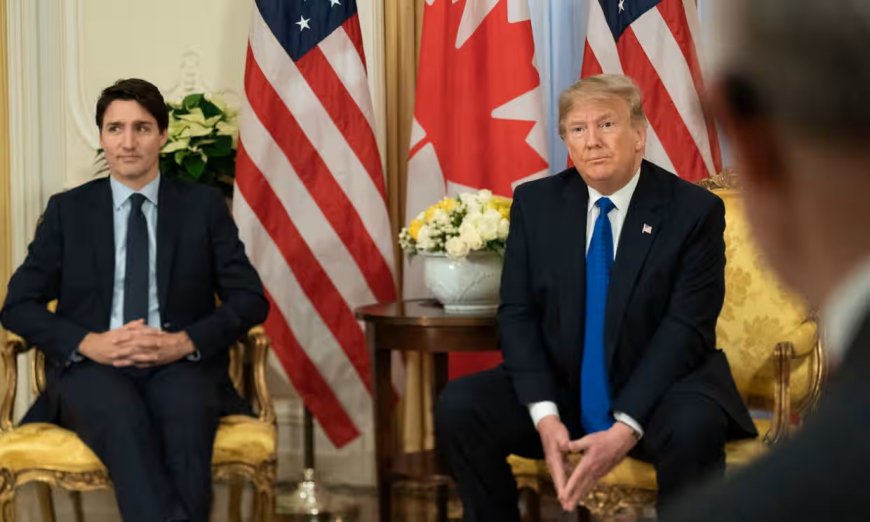The Panama Canal: History, Control, and Global Trade Impact
Explore the fascinating history of the Panama Canal, its construction, U.S. influence, and current geopolitical issues involving China and Panama. Discover why the canal remains a critical artery for global trade.

In a recent episode of BBC's "The Global Story," host Jonny Dymond explores the Panama Canal's historical and modern importance as a vital trade route. Since 1999, the canal has been under Panamanian control and has gained prominence in U.S. political discussions, especially during President Trump's administration. Trump's motivation to regain control over the canal is influenced by worries about China's expanding presence in Panama and the rising costs American businesses incur when using the canal.
This outline encapsulates the discussion surrounding the Panama Canal, highlighting the complexities of its history, current political dynamics, and the interplay between U.S. interests and Panamanian sovereignty.
Dymond engages in conversation with Michelle Fleury, a North American business correspondent, and Professor Julie Greene, an expert in American history. Together, they shed light on the canal's intricate legacy, including its construction, the geopolitical tensions it incited, and the ramifications of Trump's recent claims. The discussion delves into the historical backdrop of the canal's building, the initial U.S. control, and the gradual transition of authority to Panama. This conversation prompts critical inquiries regarding sovereignty, U.S.-China relations, and the economic realities that influence today's international trade.
Highlights
- Historical Context: The United States built the Panama Canal following a failed French attempt that led to substantial loss of life. Its success was due to improvements in engineering and medical practices.
- U.S. Control: The U.S. gained control of the Canal Zone via a treaty negotiated under contentious circumstances, highlighting the friction between American interests and Panamanian sovereignty.
- Current Tensions: President Trump’s recent remarks on reclaiming the canal underscore persistent worries regarding China's regional influence and its economic ramifications for U.S. trade.
- Public Sentiment: A YouGov poll reveals substantial American public support for reasserting control over the canal, mirroring more expansive nationalist feelings.
- Economic Factors: Increasing transit fees for the canal have ignited discussions about its management and the financial effects on U.S. businesses, leading to calls for negotiations with Panama.
- Geopolitical Landscape: This discussion addresses the evolving dynamics of U.S.-China relations and their impact on global trade routes, especially considering China's investments in Panama.
- Legacy of the Canal: The canal's history is linked to themes of colonialism, independence, and national identity, prompting significant questions about fairness and equity in international relations agreements.
Key Insights
- Historical Failures and Successes: The first French effort to build the canal in the 1880s ended in tragedy, with more than 20,000 deaths attributed to disease and poor management. In contrast, the U.S. addressed these issues through the use of advanced engineering and medical techniques, successfully finishing the canal in 1914. This history highlights the canal's importance, serving as an engineering achievement and a representation of American ingenuity and imperial aspirations.
- Sovereignty and Control: The U.S. gained authority over the Canal Zone through a treaty with Philippe Bunau-Varilla, a Frenchman acting for Panamanian interests. This strategy illustrates the intricate power dynamics, as the U.S. utilized local desires for independence to secure strategic dominance. These tensions resulted in years of Panamanian resentment and calls for sovereignty, leading to the eventual handover of control in 1999.
- Impact of Nationalism: Trump's remarks regarding the canal reflect the larger trend of nationalism and protectionism in U.S. foreign policy. His administration's commitment to "America First" policies mirrors sentiments from the canal's construction era when ideas of American exceptionalism justified intervention in Latin America.
- China's Growing Influence: The perceived growth of Chinese business interests in Panama raises concerns among U.S. lawmakers. Investments from Chinese companies, like Hutchison Whampoa, which runs important ports near the canal, fuel fears of strategic encirclement and diminishing U.S. influence in a vital global trade zone.
- Economic Realities: The recent rise in transit fees for canal usage has significant consequences for American businesses, prompting discussions about renegotiating terms with Panama. This highlights the broader economic context of sustaining a crucial trade route vital to U.S. economic interests.
- Transactional Diplomacy: Trump's method of engaging in international relations frequently focuses on achieving transactional results. His comments about the canal may be viewed as a strategic initial move intended to pressure Panama into reevaluating its ties with China, akin to previous negotiations with other Latin American nations.
- Legacy of the Canal as a Symbol: The Panama Canal is a historical emblem of colonial ambition and encapsulates the intricate legacy of U.S. foreign policy in Latin America. The stories surrounding its construction and governance reveal profound issues of sovereignty, economic exploitation, and the persistent battles for fair international relations. The canal's narrative still resonates in today’s geopolitical conversations, underscoring the lasting effects of historical legacies on contemporary diplomacy.
In summary, the Panama Canal remains central to international discussions, embodying historical grievances, economic realities, and geopolitical tensions that continue to influence U.S.-Panama relations and the larger global trade framework. As the dialogue progresses, it is evident that the canal's legacy will perpetually shape debates on sovereignty and control in the 21st century.
 Kinyarwanda
Kinyarwanda
 English
English








































































